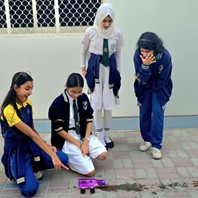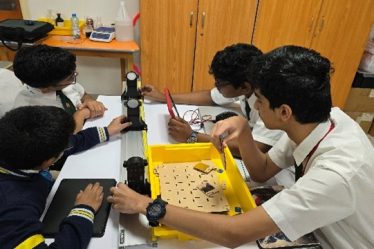Teaching Physics is always exciting for me. Capturing every learner’s interest—especially in this reels generation where focus shifts in seconds—can be challenging. Yet, this very challenge inspires us, as passionate teachers, to keep enriching ourselves with creative ways to make concepts relevant, engaging, alive, and joyful in the classroom.
One such moment came while teaching distance–time graphs. For years, I had drawn neat lines on the board, explained slopes, and given practice exercises. Some students managed, but for many, the graph remained abstract. They could reproduce it, but they didn’t really connect with it. I wanted them to experience it, not just memorize it.
That’s when I introduced the PASCO Smart Cart into the lesson—a motion-sensing cart that records position, velocity, and acceleration instantly. Instead of me drawing graphs, I invited students to push or walk with the cart as it tracked their motion. Within seconds, their movements appeared as graphs on the screen. Suddenly, a straight line wasn’t just “uniform motion” from the textbook—it was their own steady walk. A sudden stop wasn’t just a definition—it was the flat line they had created themselves.
Excitement filled the room. Students predicted outcomes, tested ideas, and began shedding their inhibition about learning Physics as their graphs took shape. The lesson wasn’t just about me teaching—it was about them discovering.
And that’s the magic of pedagogy experiments: When we experiment with pedagogy, we don’t just teach lessons— we spark curiosity, ignite understanding, and create experiences that last.

Srividhya Venkataramani



